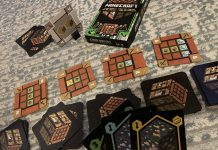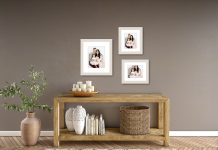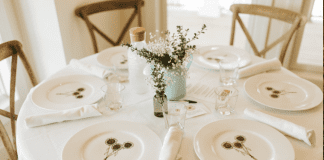I love a good cup of coffee, but most of the coffee I brewed at home never stood up to my favorite Starbucks Caffé Americano until I stumbled upon the pour-over coffee method earlier this summer.

My morning routine began with a cup of tea. I placed a pinch of good quality loose leaf tea into a strainer. The strainer sits on top of my teacup and allows for water to cover the tea leaves.
One day in May, I wanted a cup of coffee. I had grown tired of my morning tea routine and wanted something different. I didn’t want to drag my coffee maker out of the cabinet, so I decided to make a single cup of coffee using the same method I use for tea. I placed my strainer in my coffee cup and added a coffee filter to hold the coffee grounds. I poured hot water over the coffee grounds. I had to wait for the water to seep through the coffee filter and strainer before adding more. It took a few minutes to fill my cup. In the end, I had a delicious cup of coffee that was way better than my coffee maker brew.
That’s when I remembered seeing Alton Brown make pour-over coffee with a cute little contraption that looks like it belongs in the science lab. I rewatched that episode of Quarantine Quitchen (well, the beginning of it at least) to observe his methods. I also watched the Good Eats Reloaded: True Brew episode for more details. Alton grinds his own beans and mentions what they call the “Golden Ratio.” Experts suggest using a 1:17 ratio – for every 1 gram of coffee, use 17 grams of water. Depending on how you like your coffee, you’ll need to experiment with the amounts.
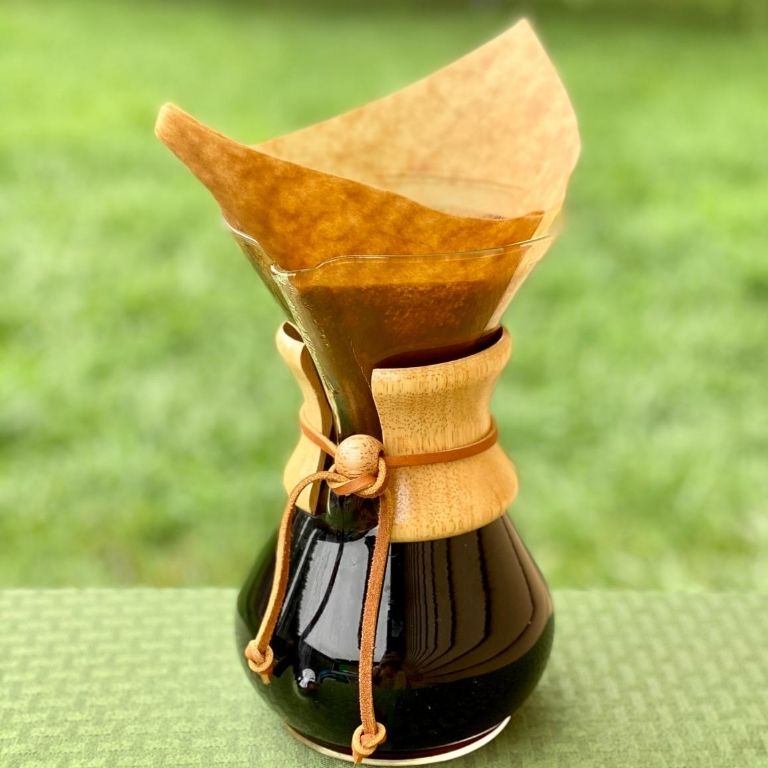
I purchased the Chemex Pour Over Coffee Maker to make brewing coffee easier for me. I was not interested in investing in a grinding machine. The good ones are pretty pricey. I just use my Starbucks coffee grounds. I like both the Pike Place and Espresso Roast, although Pike Place is my favorite of the two.
Coffee filters also make a difference. First, I tested a decent brand from Target that’s made for auto-drip coffee makers. I had to double up the filter to get it to make a good cup of coffee. One filter was too thin, and the coffee ran straight through it. Chemex claims their filters are thicker and are designed to keep bitter elements, oils, and grounds out of your cup. I found they work much better than the doubled up filters from Target, so I think they are worth the extra cost.
The first time I used my Chemex, I weighed out the coffee grounds and the water to brew coffee with the so-called golden ratio. It was on the bitter side and not quite as smooth as I like. I experimented with the ratio until I found one that I enjoy just as much as my beloved Caffé Americano.
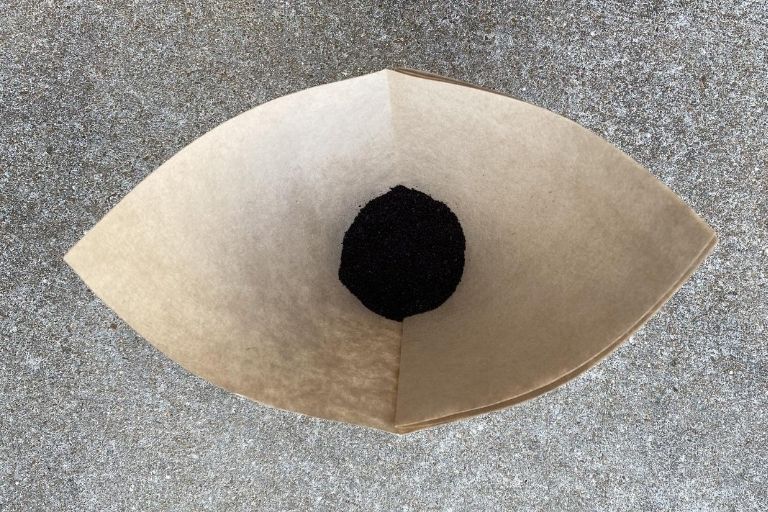
I use 1 ½ tablespoons for each 12-ounce cup of coffee. While my water is heating up in my electric kettle, I place the coffee grounds in my filter. They say the temperature of the water makes a difference when brewing your coffee as well. Supposedly, 200°F is the optimal temperature for brewing pour-over coffee. My electric kettle boils the water, but when I double-check the temperature, it’s only about 190°F. Close enough for me. Maybe one day I’ll upgrade to a kettle that can select the temperature. This would be beneficial to my coffee brewing operation as well as steeping different types of tea.
I have one last trick to offer from the experts. Pour just enough water over the coffee grounds to wet them. Then, let it sit for about 45 seconds. This allows the coffee to bloom, which allows carbon dioxide to escape. Blooming is more important when you have freshly ground beans. After blooming, fill the top of the Chemex with water. You’ll probably need to do this two or three times to make a full carafe of coffee.
To finish off my coffee, I use sugar and a splash of half and half.
How do you like your coffee?



